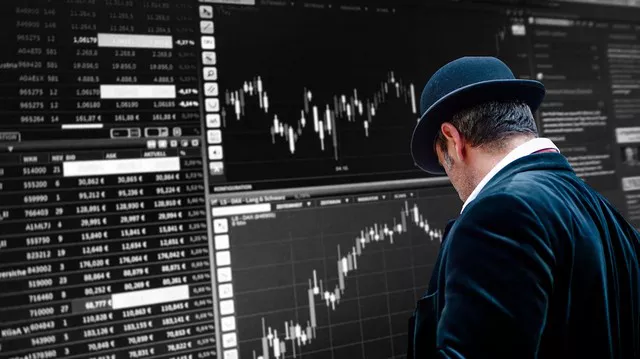Timing plays a crucial role in trading futures contracts. Buying and selling at the right moment can make a significant difference in achieving maximum returns. In this comprehensive guide, we will explore the importance of timing in futures trading and provide insights into the factors to consider when determining the opportune moments to enter and exit positions. By understanding the key principles and strategies for timing futures trades, traders can enhance their chances of success and optimize their investment returns.
The Significance of Timing in Futures Trading
- Price Volatility: Futures markets are known for their price volatility, offering opportunities for profit through timely trades.
- Maximizing Profit Potential: Timing your entries and exits can increase the likelihood of entering trades at favorable prices and capturing optimal profits.
- Minimizing Risk: Proper timing can help minimize risk by avoiding unfavorable market conditions and reducing the potential for losses.
Fundamental Factors Influencing Timing in Futures Trading
Economic Data and Events:
- Economic Releases: Key economic indicators, such as GDP reports, employment data, and central bank announcements, can significantly impact market sentiment and trigger price movements.
- Political Developments: Political events, elections, and policy changes can introduce uncertainty and volatility into the markets, requiring careful timing of trades.
- Global Events: International events, including geopolitical tensions, trade agreements, or natural disasters, can have a profound impact on futures markets and necessitate strategic timing.
Market Seasonality:
- Understanding Market Cycles: Certain futures markets exhibit seasonal patterns, influenced by factors like weather conditions, agricultural cycles, or consumer demand. Recognizing these cycles can help traders time their trades accordingly.
- Analyzing Historical Data: Reviewing historical price data can uncover recurring patterns and trends, providing insights into optimal entry and exit points.
Technical Analysis Tools for Timing Futures Trades
Chart Patterns and Indicators:
- Support and Resistance Levels: Identifying key support and resistance levels on price charts can aid in determining favorable entry and exit points.
- Trend Analysis: Utilizing trendlines, moving averages, and other technical indicators can help identify the direction and strength of market trends, assisting in timing trades in line with the prevailing market sentiment.
- Oscillators and Momentum Indicators: Oscillators like the Relative Strength Index (RSI) or Stochastic Oscillator can indicate overbought or oversold conditions, signaling potential reversal points.
Candlestick Patterns:
- Reversal Patterns: Candlestick patterns, such as doji, hammer, or engulfing patterns, can provide insights into potential trend reversals, aiding in timing entry or exit positions.
- Continuation Patterns: Recognizing patterns like flags, triangles, or pennants can help identify periods of consolidation within a trend, assisting in timing trades for maximum profit potential.
Strategies for Timing Futures Trades
Breakout Trading:
- Breakout Confirmation: Wait for price breakouts above key resistance levels or below support levels, confirming the beginning of a new trend before entering a trade.
- Volatility Breakouts: Monitor volatility levels and trade breakouts during periods of increased market activity, aiming to capture substantial price moves.
- Pullback Entries: Look for pullbacks or retracements in established trends as potential entry points, waiting for the price to stabilize before entering a trade.
Trend-Following Strategies:
- Moving Average Crossovers: Use the intersection of different moving averages as a signal to enter or exit trades in line with the prevailing trend.
- Trendline Breakouts: Monitor trendlines and enter trades when the price breaks out of a trendline, indicating a potential continuation of the existing trend.
- Ichimoku Cloud Analysis: Utilize the Ichimoku Cloud indicator to identify trend direction and timing trades based on cloud breakouts or reversals.
Mean Reversion Strategies:
- Overbought and Oversold Conditions: Identify overbought or oversold levels using oscillators or momentum indicators and initiate trades when prices revert to their mean.
- Range-Bound Markets: Recognize periods of range-bound price action and trade within the established price range, buying near support levels and selling near resistance levels.
- Bollinger Bands: Use Bollinger Bands to identify periods of low volatility and anticipate potential price reversals when the bands contract.
Risk Management and Timing
- Setting Stop-Loss Orders: Implementing stop-loss orders helps manage risk by defining exit points if a trade moves against expectations.
- Position Sizing: Determine appropriate position sizes based on risk tolerance and account size to avoid excessive losses or overexposure to market fluctuations.
- Monitoring Market Conditions: Continuously monitor market developments, news, and price action to adjust timing strategies if necessary.
Conclusion
Timing is a critical aspect of futures trading, as it can significantly impact the success and profitability of trades. By understanding the fundamental factors, using technical analysis tools, and implementing effective timing strategies, traders can increase their chances of entering and exiting positions at opportune moments. However, it’s essential to remember that timing alone is not a foolproof method and should be complemented with proper risk management and ongoing market analysis. With a disciplined approach and continuous learning, traders can improve their timing skills and strive for maximum returns in the futures market.


